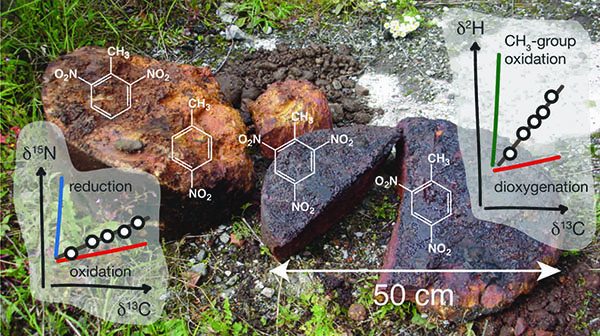Department Environmental Chemistry
Biodegradation of nitroaromatic contaminants: from enzyme kinetics to a Noble field site
Nitroaromatic explosives persist in the subsurface in different phases (e.g., bound to soil or sediment matrix or as solid-phase residues) and it is extremely challenging to assess biotic and mineral-catalyzed degradation. With the combined analysis of C, N, and H isotope fractionation, we can quantify transformation, even if it takes place via several potentially competing pathways over time-scales of decades.
Nitroaromatic compounds can be transformed by a suite of oxidative and reductive pathways. Over the last 8 years, we have studied the kinetic isotope effects of all major reactions in the laboratory, at contaminated field sites as well as through computational chemistry. The combined evidence of this work enables us to interpret isotope fractionation in the residual contaminants in terms of ongoing and past degradation reactions. In our most recent work, we study the enzyme kinetics of nitroarene dioxygenases and how their substrate specificity determines the observable isotope fractionation.
Important publications
Collaborators
Piotr Paneth, Lodz University of Technology
Rebekka Parales, University of California, Davis

